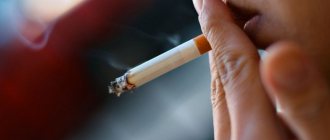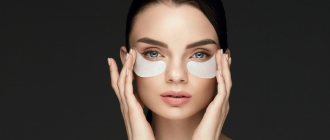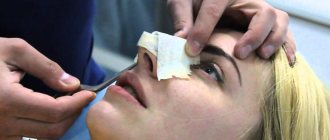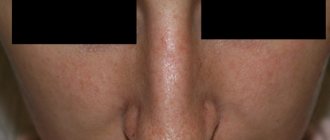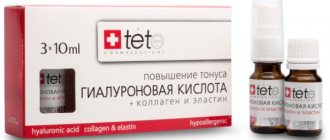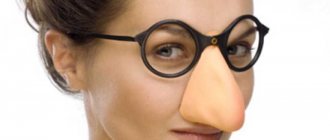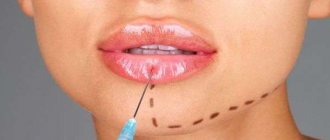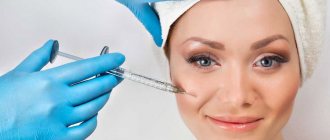The appearance of swelling of the tip of the nose after corrective rhinoplasty is considered a completely normal reaction. Similar consequences occur in almost all patients. For many, an aesthetic problem that appears in the area of the operated organ causes discomfort. The more scrupulously you follow the plastic surgeon’s recommendations, the faster your recovery will speed up and the swelling and discomfort will disappear.
Tip correction
A beautiful, neat nose can be obtained without resorting to surgery, with the help of correction. It is recommended to carry out the procedure in the following cases:
- thick and curved wings;
- fleshy nose;
- a pronounced groove or dimple at the tip;
- hook-shaped;
- snub nose;
- strongly pointed tip.
Problems can be solved by correction, rhinoplasty or lipofilling of the nose. The latter procedure is carried out using contouring by injecting filler gels or fat into the patient's skin.
The undeniable advantages of the injection technique include:
- safety;
- low morbidity;
- the result looks natural and natural;
- One procedure is enough to achieve the desired effect.
After correction or rhinoplasty, a side effect is reported by a hard tip of the nose. The defect is especially noticeable when the surgeon reduces the nose for the second time or corrects its tip.
After surgical medical intervention, it is possible that the nostrils will have different sizes and there, on the columella, the seam will be slightly noticeable. All surgical interventions affect the integrity of the skin and damage blood vessels. In the process, swelling is formed.
To reduce the risk of complications and swelling, surgery should be performed in specialized plastic surgery institutions with professional doctors.
How long does nasal swelling last after rhinoplasty?
Experts say that the defect will completely disappear in about a year to a year and a half after surgery. The duration depends on the physiology of each organism.
It turns out that swelling after rhinoplasty plays a positive role in the regenerative process. As a result of this phenomenon, cell division accelerates. And as soon as the blood supply begins to be restored, the swelling and swelling from the face goes away.
The timing of swelling after rhinoplasty is influenced by the following factors:
- age criteria;
- the body’s tendency to metabolism, physiological edema;
- elasticity of the epidermis;
- complexity of the operation.
With the disappearance of the defect, the risk of infection decreases and damaged capillaries are restored.
What is callus?
The human body, after any external intervention, compensates and creates a margin of safety. In the case of rhinoplasty, a callus develops in the place where the bone fibers were damaged. Excessive tissue growth occurs, which is why the nose after surgery may appear even larger than before. Approximately 12% of people who have undergone rhinoplasty are susceptible to this. Approximately 30% of them go under the knife again to eliminate any deficiencies that have arisen, including overgrown tissue.
Bone callus should not be confused with classic callus, since it is not a coarsened derivative of soft tissue. A callus is a growth of bone tissue that has developed as a result of improper healing of the injury site. This process, despite its deviation from the norm, is natural and allows the bones to heal after any injury or damage.
In fact, this phenomenon is quite rare, but such a problem can affect literally anyone. And the fact is that even a doctor cannot predict how each specific organism will react to surgery. Therefore, this side effect is not the doctor’s fault.
This complication does not belong to the category of those diseases that are life-threatening. But to prevent the development of callus after rhinoplasty, it is necessary to take a number of preventive measures. If it has already begun to develop, then a timely visit to a surgeon and subsequent adoption of measures can, if not eliminate it, then prevent excessive growth. This will also avoid pain in the area and serious health consequences.
Swelling after rhinoplasty by month
The severity of the swelling gradually changes. Doctors divide this process into primary, secondary and residual stages. After a certain period of time, the defect disappears and the operated area takes on a healthy appearance. Therefore, surgeons consider the presence of edema to be a normal process.
Primary edema
The first swelling occurs during rhinoplasty. The most severe swelling is especially noticeable in the first day, after which it gradually subsides. To minimize this process, plastic surgeons fix the nose with a plaster splint. The plaster helps keep the corrective area in the desired position. But this can cause swelling to spread to other areas of the face. The lower eyelids, cheeks, forehead, and sometimes the chin may be affected.
Local administration of medications effectively facilitates postoperative adaptation.
In the first month of rehabilitation after rhinoplasty, it is recommended:
- sleep only on your back;
- do not tilt your head down.
- limit physical activity;
- avoid potential injury;
- do not drink alcohol;
- wash your face carefully.
You cannot use hot and cold compresses on your own to remove the defect. After 30 days, the primary swelling will subside on its own, leaving barely noticeable lumps.
Secondary edema
After removing the plaster, the swelling of the nose, although less pronounced, brings more discomfort. The swelling, which can persist for about a month, prevents the patient from breathing. The soft tissues and mucous membranes are still in an inflamed state. You can make breathing easier after rhinoplasty with the help of special medications.
In this state, a person experiences:
- headaches;
- constant fatigue;
- lack of sleep;
- decreased immunity.
To alleviate the condition, relieve swelling and speed up the recovery of the body, specialists prescribe multivitamins and immunomodulators.
Residual
A hardened tip of the nose indicates internal residual swelling after rhinoplasty. Visually, the face looks completely normal.
At the last stage of rehabilitation, blood supply is gradually restored. Depending on the damage to tissues and blood vessels, swelling can last approximately 12-18 months.
The density of the patient’s skin plays a big role in the speed of the recovery process. The thicker the skin, the longer it takes for the swelling to go away.
How to relieve swelling after rhinoplasty
Sometimes nasal swelling after rhinoplasty creates swelling of the entire face. Certain medications can help return the patient to a normal lifestyle.
Preparations for rapid tissue healing after rhinoplasty
Only a doctor can prescribe medications. It is based on factors such as a tendency to an allergic reaction and the individual characteristics of the patient.
Traumeel C ointments and tablets
The pharmaceutical market offers a homeopathic drug for rapid regeneration and relieving swelling. Traumeel S has a wide spectrum of action with a pronounced anti-inflammatory effect.
He is appointed:
- to accelerate regeneration;
- removal of small subcutaneous hematomas;
- obstacles to scar formation.
The product helps you quickly return to normal physical activity.
Bromelain
The product is a proteolytic enzyme of natural origin. Doctors recommend starting to take the drug before the operation. It has excellent anti-inflammatory and decongestant functions.
Dimexide
The active component of the drug has anti-inflammatory, antimicrobial and anesthetic effects. The drug is used for external use. Available in different pharmacological forms. Improves the course of metabolic processes in the area of inflammation.
Some drugs not only enhance the activity of other drugs, but also their toxicity. Therefore, they should be taken with caution and after consulting a doctor.
Physiotherapy to relieve swelling after rhinoplasty
For a speedy recovery, doctors recommend physiotherapeutic measures. Their main task is to improve blood circulation, metabolic processes in cells and reduce swelling at the tip of the nose.
Microcurrents
Microcurrent therapy is prescribed to improve blood circulation and restore sensitivity. During rhinoplasty, tissues are displaced and the functioning of nerve endings is disrupted.
The effect of the current strengthens the walls of blood vessels, relieves swelling, and quickly eliminates bruises at the cellular level. Therapy restores normal innervation.
Ultraphonophoresis
The administration of medications through the skin helps to consolidate the results after rhinoplasty.
Aspects of ultrasound have a gentle effect on the body:
- stimulate the formation of young cells;
- relieve pain;
- reduce irritability;
- enhance cellular metabolism;
- promote a sterilizing effect.
The effect of the procedure is quite strong, since the beneficial substances penetrate deep into the skin.
Traditional methods
If the tissues are swollen and swelling of the tip of the nose is bothersome after rhinoplasty, then the patient can try some alternative medicine recipes in combination with drug treatment.
Take an aloe leaf and cut it lengthwise. If you apply the cut to the swelling, it will go away faster.
It is effective to use herbal compresses for swelling, such as string and chamomile. To do this, prepare a herbal decoction, soak a piece of bandage in it and apply it to the worried area. Keep for about 20 minutes. Then repeat the manipulation daily for a week.
Teas made from ginger root or dried mountain medicinal arnica are useful for swelling. You need to drink twice a day.
Although decongestants are not permanent, they help make temporary discomfort easier to bear.
Diagnosis and treatment
Before wondering how to remove callus after rhinoplasty, it must first be confirmed. This is done using an x-ray, which shows the presence or absence of a defect. Based on this, the doctor must build a therapy tactic. In the image, the defect manifests itself as a special membrane located at the site of tissue damage.
Now let's talk about what to do to eliminate the defect. The rehabilitation process is quite long. The main goal of therapy is to prevent further tissue growth. There are a number of techniques and procedures that help cope with this defect. Moreover, they should be undertaken immediately after the operation has been performed. First of all, this is taking medications that should reduce inflammation of the intervention area, as well as enhance their nutrition. Patients who develop callus may be prescribed:
- Treatment with medications;
- Operation;
- Physiotherapeutic procedures.
Let's take a closer look at these types of interventions. The rarest way to fix the problem is surgery. It is prescribed only in extreme cases. But drug treatment and physiotherapy can be used in combination, which will be discussed further.
Operation
This is a radical method. It is prescribed only after other methods have already been tried and have not yielded results. In this case, the doctor must prepare for the operation and think through ways to remove bone tissue so that new growth does not occur. The operation is also prescribed if:
- Periodically there is an increase in temperature;
- There is increased swelling;
- Redness occurs.
All these symptoms should be associated exclusively with callus and other complications after correction. But it is worth noting that removing callus does not guarantee you will completely prevent the situation from recurring. Only after a year will you be able to determine whether the repeat operation was successful for you. To avoid recurrence of the situation, follow your doctor's recommendations.
Drugs
Drug treatment involves the use of a number of drugs that are designed to reduce swelling and help nourish tissue. These are mainly glucocorticosteroid hormones. But they can also prescribe strengthening agents, painkillers, and so on. Most commonly prescribed medications:
- Diprospan - injections that are administered subcutaneously. They will reduce swelling and inflammation and promote scarring.
- Kenalog.
- Traumeel S - to relieve swelling and as an anti-inflammatory agent. It is widely used in therapy against callus formation after rhinoplasty. This is a homeopathic medicine in the form of tablets or drops.
The doctor may also prescribe antibiotics immediately after surgery, which will protect against infection, which can also cause excessive tissue growth.
Physiotherapeutic procedures
With the help of physiotherapy, treatment is very long. But it is considered one of the most effective. In this case, the patient must be under the supervision of a doctor. In the process of physiotherapy, the patient not only improves the resorption of callus, but also accelerates the process of tissue regeneration in general. The procedures include:
- Electrophoresis with appropriate drugs;
- UHF;
- Magnetotherapy;
- Phonophoresis with the appropriate drug;
- Thermotherapy.
These procedures are prescribed only in the absence of contraindications. If a person has an increase in temperature, then most of them cannot be performed. Therefore, consult your doctor to avoid harm to your health.



